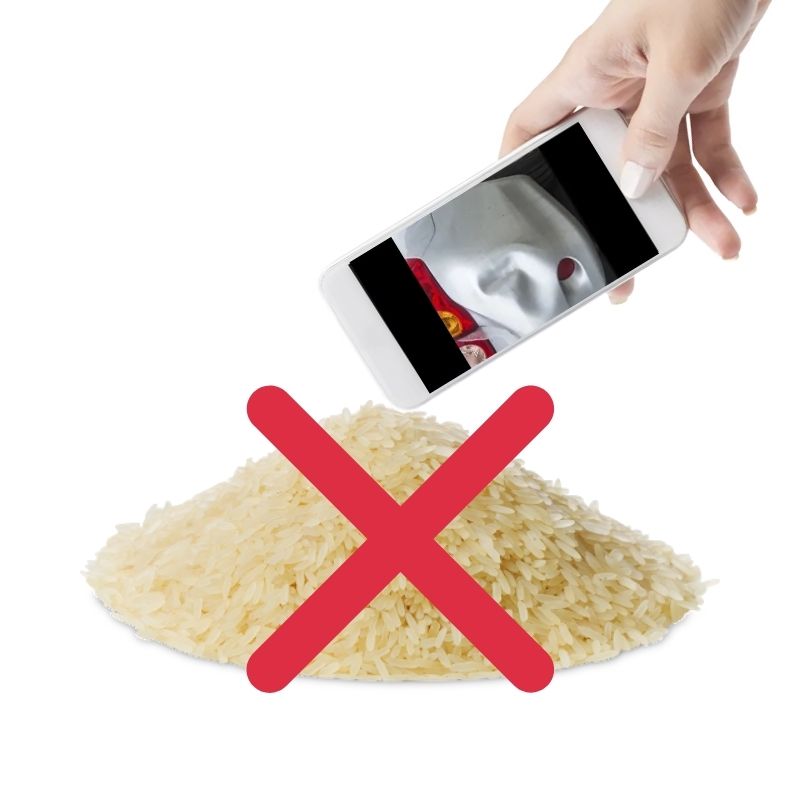In 2014, about 22 million smartphones in the US alone stand to become useless after being submerged in water, according to Eric Jones, co-founder of TekDry. This include phones that were accidentally dropped in toilets or swimming pools, fell in rivers, over even splashed by water, or any liquid for that matter.
When you try to search Google for wet iPhone repair, or ways on how to rescue a drowned or a water-submerged phone, most of the websites suggest that you place the phone in a rice container overnight to absorb moisture. This may be true. But then, the question is: will it absorb the water completely inside the device?
A recent study conducted by DTJ Consulting, as commissioned by TekDry, has shown that using rice to dry a wet phone is not effective. DTJ Consulting is an engineering and technical consulting firm headed by David James, its founder. TekDry is a device rescue service centre that specializes in drying wet devices.
The result of the study had shown that rice is not that effective in removing moisture. It is even less effective than just leaving the device to dry on its own. In other studies within the Google search sphere, it was also shown that rice rates poor as a drying agent compared to silica gel or even compared to instant oatmeal or the classic oatmeal.
In the study by DTJ, they monitored the weight loss of simulated wet phones in an open room and another device in a rice container after 48 hours. The result had shown that the weight loss due to water evaporation of the unit left in the open room was 14.7% while the weight loss of the unit left inside the rice container was 13.1%. In both cases, it was clear that water was not completely gone after 48 hours.
According to Adam Cookson, TekDry’s co-founder, the optimal window to rescue a wet device is less than 48 hours. This means that we need to completely dry the unit as quickly as possible and in less than 48 hours, otherwise moisture-infused or moisture-related damage could start to occur. This may include circuits and circuit-boards starting to corrode.

So what do you do when you drop your cell phone in the water? Here are some simple tips to prevent further damage to your phone:
- Power off your phone immediately. Do not press any buttons or keys. This will prevent short circuits within your device.
- Remove the battery if possible. This will not only prevent further damage but also remove excess water inside the device.
- If the phone was dropped in saltwater, rinse immediately with fresh tap water. Saltwater is highly corrosive, and to prevent fast corrosion, it is better to rinse your device under running tap water.
- Shake your phone lightly while holding it firmly to remove the water inside the unit. Make sure not to bang your phone.
- Wipe the phone with a paper towel or clean cloth to remove excess or visible water from the device.
- You may air-dry your phone in an open room in an upright position. This allows water from the inside the device to drain naturally. You may let the device stand on a dry paper towel so that the water that goes out from the unit is absorbed quickly. Change the paper towel as often as necessary or when it becomes very wet. Additionally, you may use a room fan to accelerate air circulation.
- Do not plug your phone into an electric outlet. This may burn the circuits in the device and completely damage your unit.
- Do not use a hairdryer to dry the phone as too much heat may warp the plastic parts of the device.
- Do not place in an oven – conventional or microwave – as it may completely damage the unit.
- Call a device rescue service centre immediately for help. It is always best to refer to expert technicians to rescue your wet gadgets than doing a repair yourself.
As a bit of further advice, do not bring your phone with you in the toilet, in the sink while washing dishes, nor in the pool or even beside the pool, and much more, don’t bring your phone when you go to the beach for a swim. For the more adventurous, better buy a waterproof purse where you can keep your phone or your device while you are in the sea or in the river for your adventure trips.
Recent Comments